The idea of a perversion and the vulnerability that comes with an alternate social world, being a form of art and meaning has intrigued me after the Symposium. Agency art: the idea of looking into human behaviour as a form of aesthetic, was something I learnt. I was drawn to the ideas Matt Adams brought up during his Keynote on Day 2, which coincidentally resonated amongst the performances seen on Day 3, where he mentions various Blast Theory projects such as Kidnap (1998), and My One Demand (2016), featuring the enhancement of emotional value through the ‘abuse’ of vulnerability of the human self.

There was a lot of cinematic views + music being used to create another layer of emotional value. My One Demand (2016)
My essay will look further into the concepts of ‘raw feelings’, as mentioned in depth by Matt Adams, and by the igaies crew directed by Jon Cates. In a quote mentioned by Jon Cates in a previous interview with Randall Packer:
“For me this approach to noise or noisiness, or dirt, or dirtiness, is a way to foreground as you say, an aberrance or perversion of normative message or what we might perceive to be logical reasoning.”
— Jon Cates, Glitch Expectations: A Conversation with Jon Cates by Randall Packer
In an alternate social world, it takes away many boundaries that one were binded to in a society like my own: Singapore. A country full of rules and Asian traditions, we do not usually seek the unseekable, nor speak the unspeakable. Words were all taboo, and there were many risks with speaking your mind. For a Singaporean Chinese with rather strict parents, it was an eye-opening experience for myself to have been able to witness the discussions of many other artists out there. In a sense, it felt like peeking into a life that I could not ever achieve, and it peeked my interests in many ways, evoking emotions and questions in my head that could not be answered by a fellow Singaporean. To me, the fact that the performance was so different and ‘raw‘, that I wanted to look at it longer, and further understand why they wanted to perform that way. It was due to this glitch, that made me require a knowledge of what was going on.
It brings me back to the Keynote by Matt Adams — that there was always an innate need in a human for voyeurism. I know there is a more sexual meaning to this, but looking it up gave me this meaning:
voyeurism:
enjoyment from seeing the pain or distress of others.
With the idea of glitch; the concept of someone doing something different from you in their most intimate of spaces, brings up another point that Matt Adams made during his Keynote:
The empowering nature of being intimate or vulnerable
Not only did the viewers have their own feelings about the performance, it gave a sense of power to the performers as well. They shaped what the audience could see in their performances, giving them a right to limit what they wanted us to know. It was through their actions that we could evoke any sort of emotion at all. It was also through these limitations that we experienced various emotions.
One example would be the puppy by Shawne Michaelain Holloway, who featured themself as a puppy in tight black straps, being dragged down by a television screen (I would presume). It felt like an initmate moment that was usually practiced in a personal and extremely private space. First of all, to have been able to put one’s self out there for a public audience, not to mention a cyber audience that you had no idea of (nor what they looked like should you need to track them down), was an extremely vulnerable but powerful moment. And the angles we were given to witness this private moment, were two cameras:
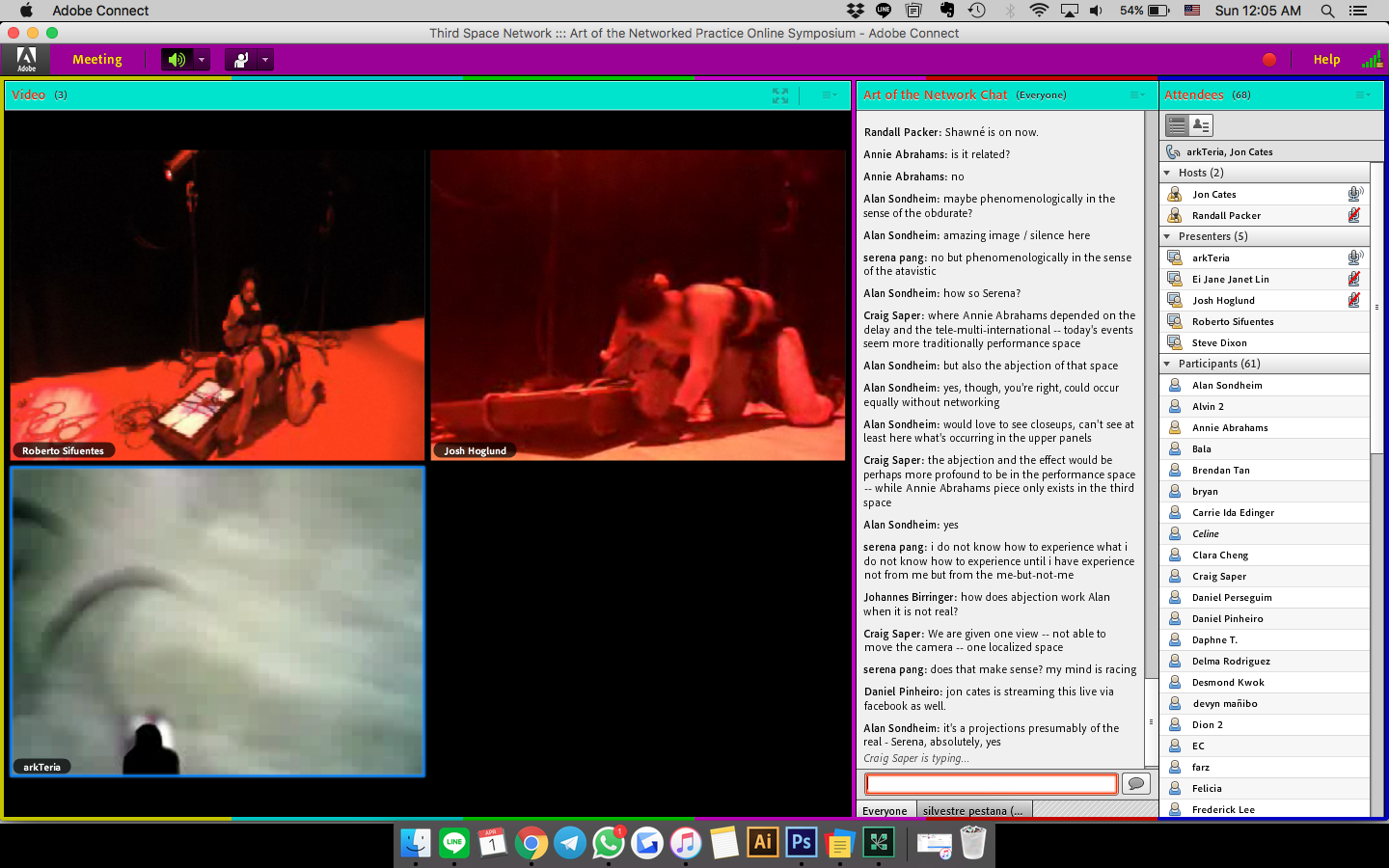
Performance by Shawne Michaelain Holloway. Top right is a closer angle. Top left is an angle that’s seemingly like a surveillance camera. Performing on bottom left is Akteria, Arcángel Constantini drawing on petri dishes producing live Noise soundscapes.
1. A camera on the floor, near the puppy. It was on a eye level lower than the puppy, and it gave us a sense of ‘we shouldn’t be here seeing this’. It also gave the feeling of being ‘face-to-face’ with someone not on a ‘human’ level, like you could share this moment. Either interpretation is okay.
2. A camera high above, seemingly like a surveillance camera footage. It gave the viewer yet another breech of privacy, and we witness the puppy’s back and how extremely vulnerable they would have been if someone else were to come up behind them.
There was no eye level that was similar to that of a physically capable adult, and it leaves you with a sense of curiosity, endearment, and perhaps one’s own vulnerability to not be able to climb up to one’s own eye level. It was like the audience were hiding and had nowhere to run, while witnessing this, and it was entrancing in its own right.
Thus brings back the idea of perversion, voyeurism and maybe, masochism. Humans, and I would say, Singaporeans, are all coded in ways to receive these ideas with a sense of shame, and lack of knowledge over them. It is mostly through unsettled emotions and thoughts that these things are mostly viewed and then dismissed quickly. Going back to Blast Theory’s Kidnap (1998), one could only watch as the kidnapees were held hostage, but lacked any sort of power in changing anything. It was through this practice of garnering emotional value from an extremely vulnerable source, that I feel Blast Theory succeeded in, and the risks they took for this to happen was very noteworthy.
Their other project, My Neck in the Woods (2013), looked into the lives of teenagers in their comfortable places, learning about them through the third space, achieved the same results (if not, differently in terms of acceptance).
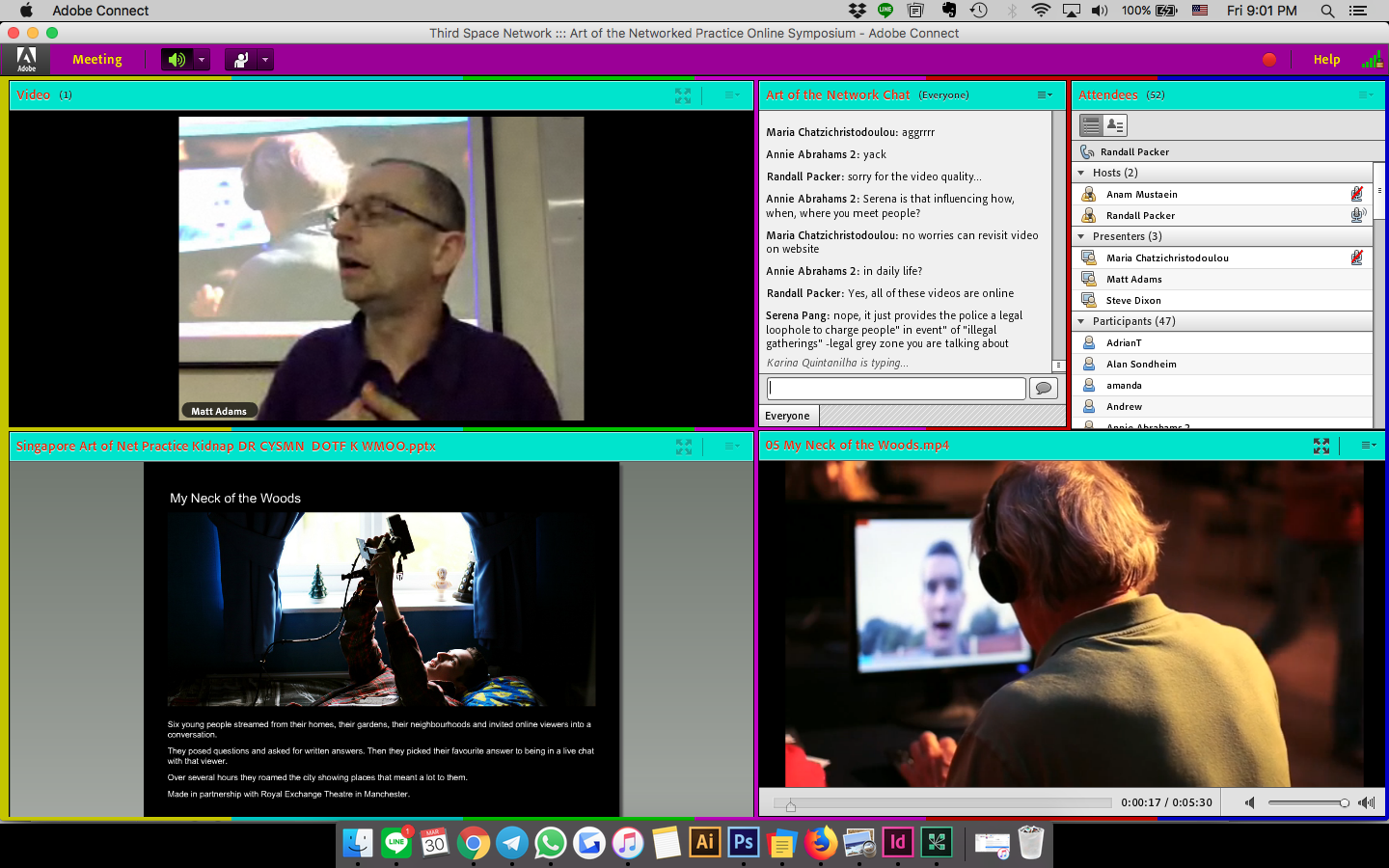
My Neck in the Woods (2013). Learn about the lives of teenagers and where they go to, and how they’d act around a camera.
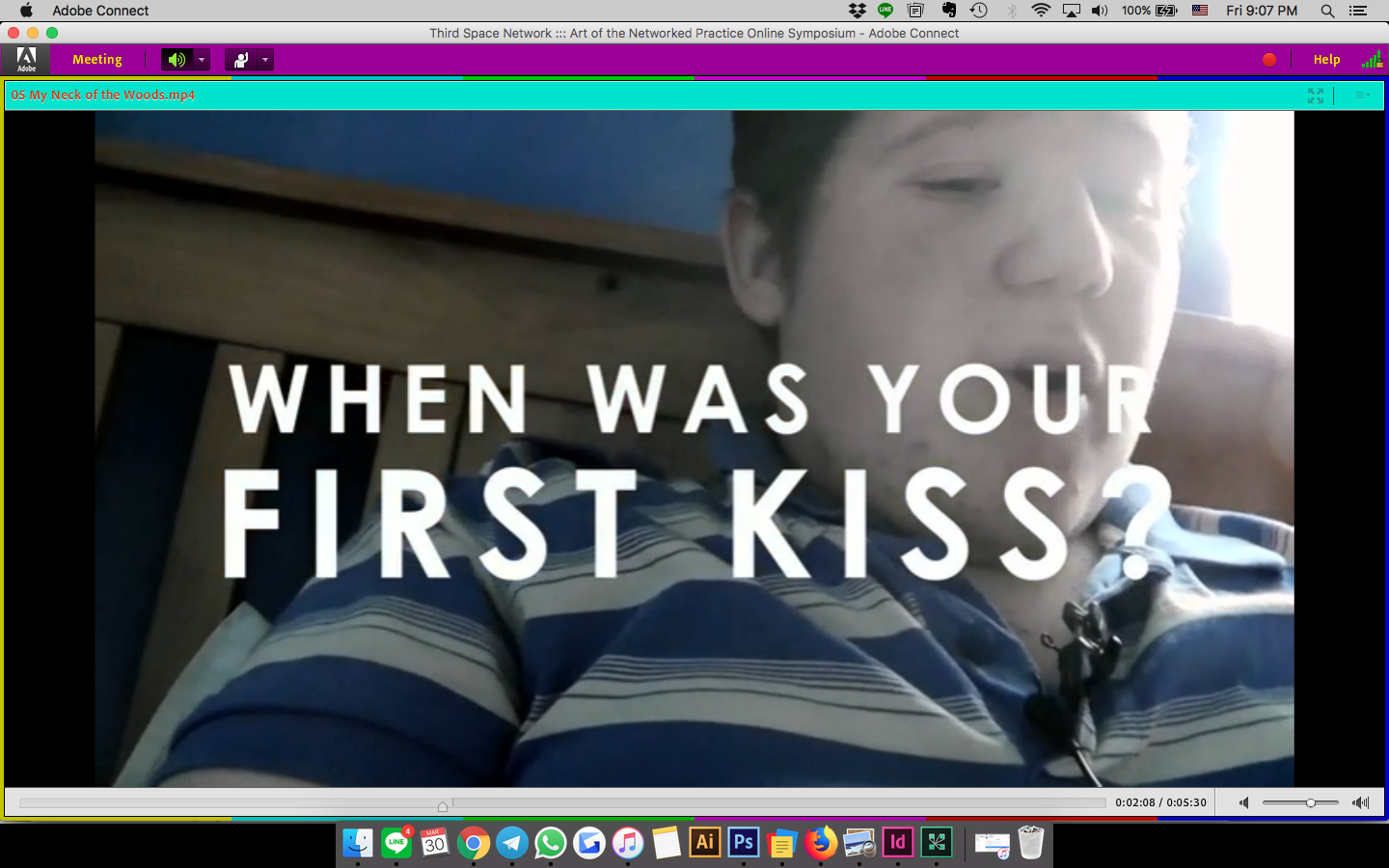
My Neck in the Woods (2013). One gets to learn about these teenagers’ lives, and get to ask questions like these. It was a conversation through the Third Space, while the broadcast themselves.
I have learnt that ‘raw’ wasn’t necessarily bad, because it brought about thoughts that one might not have considered in a safe, controlled environment. Sure, these experiments and performances might have been controlled spaces in ways, but they were certainly in no way safe, and it was only through the idea of social broadcasting, a space where many others could contribute and learn things together, that it could really thrive as an art piece. And now I end the essay with another quote by Jon Cates:
“Those systems might be broken, they might be glitched, and they might be imperfect and noisy, and that might be what attracts us or me to those systems. But still they are functional or functioning in one way or another systematically. So they are connected to one another as assemblages.”
— Jon Cates, Glitch Expectations: A Conversation with Jon Cates by Randall Packer
We live in a world where social media is, simply putting, the root of the existence of many. The lives of many are shown, and seeing how many of these artists are trying to make use of the idea of social broadcasting to allow others to look deeper into their lives, I realise that humans are all flawed individuals who basically are artistic in the way they are made. To look into the way humans react through a medium that they would normally be honest on, be it on an anonymous platform, allows one to study the raw intensity of the human emotion. They bounce off each other, and together, are able to function as a whole human race. This is what I have found interesting after the three days of Symposium, and I am glad to have found a chance to have been part of this, even if I was merely part of the audience. Thank you for the opportunity.
References
Packer, R. (2014, July 16). Glitch Expectations: A Conversation with Jon Cates. Retrieved April 06, 2018, from https://hyperallergic.com/134709/glitch-expectations-a-conversation-with-jon-cates/
Packer, R. (2018). Program. Retrieved April 06, 2018, from https://thirdspacenetwork.com/symposium2018/program/
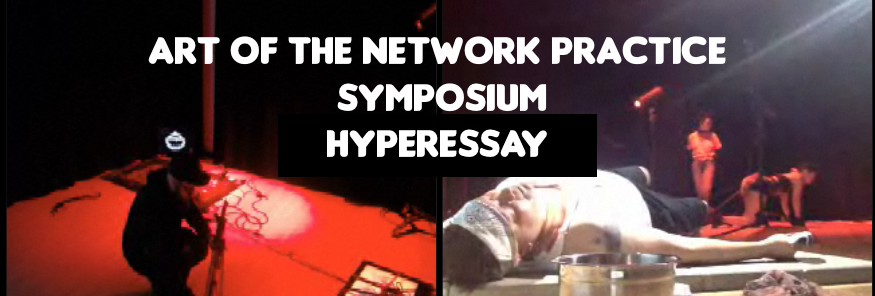
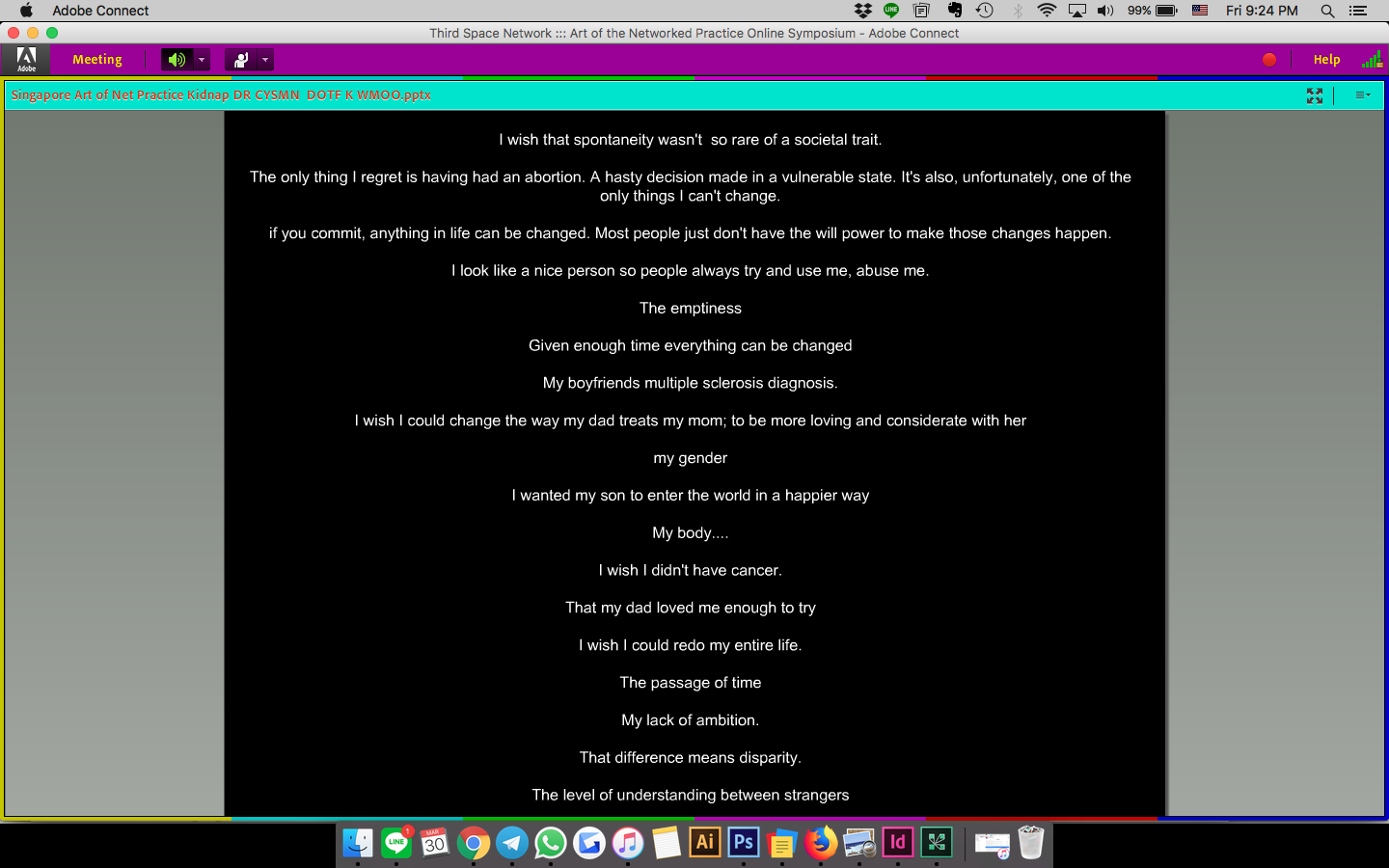

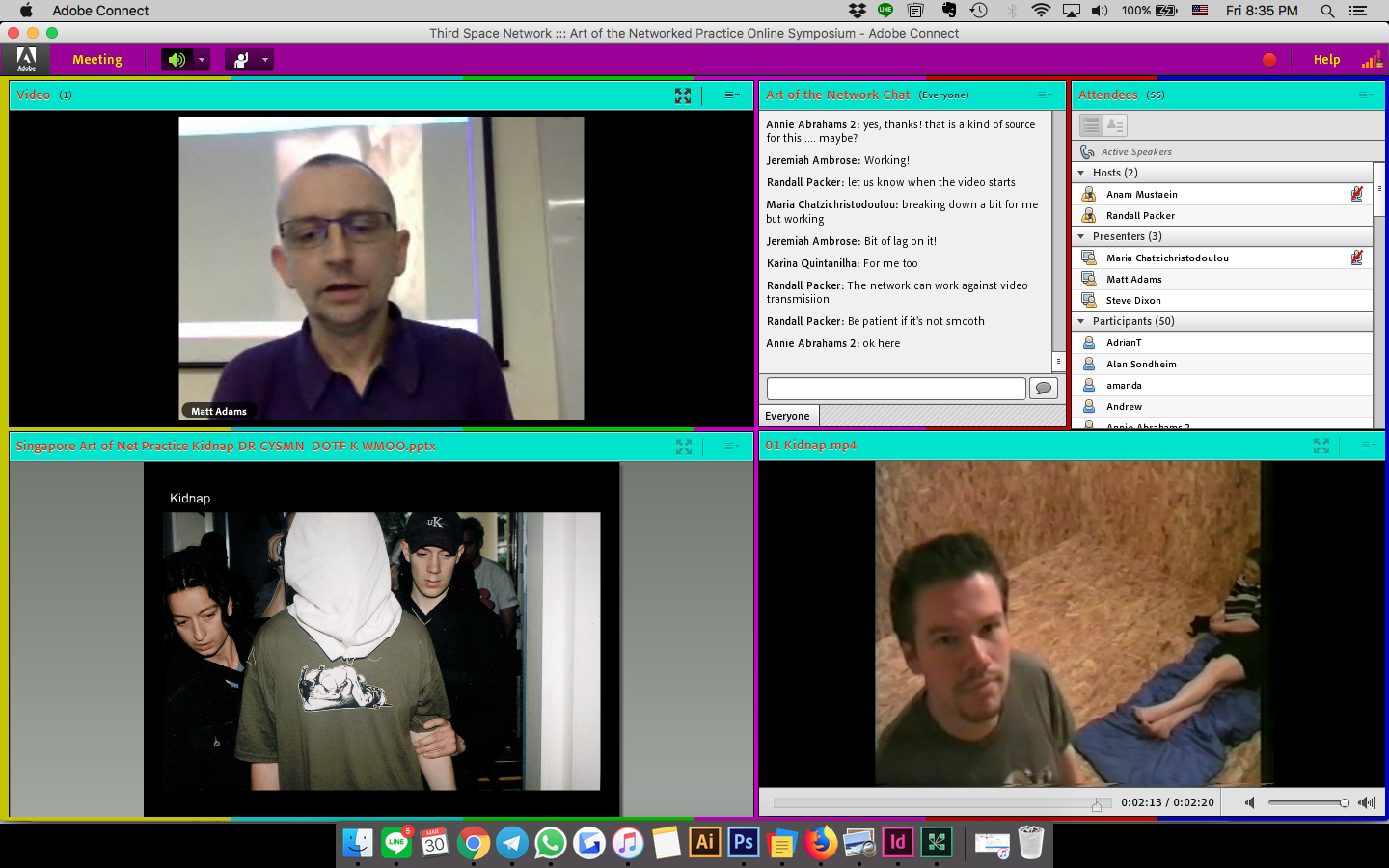
Recent Comments